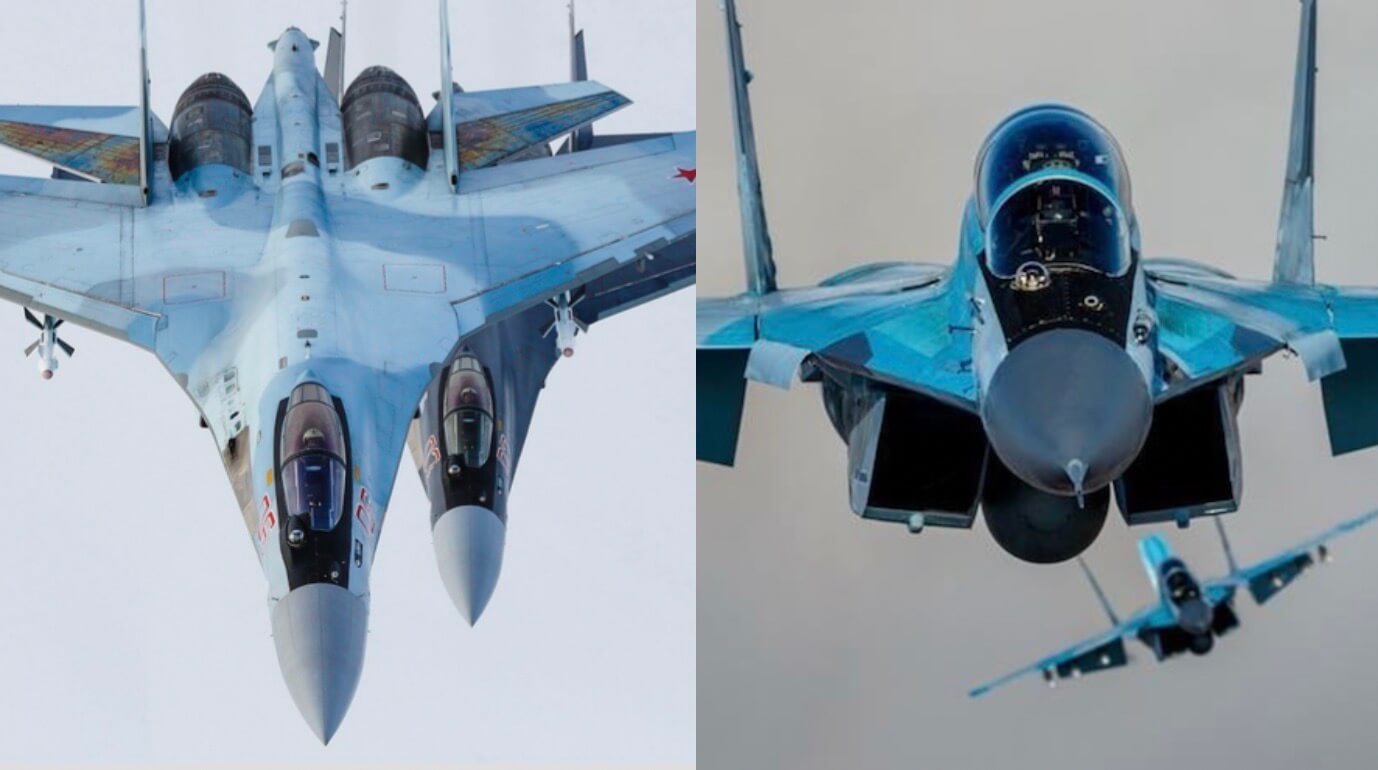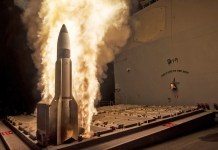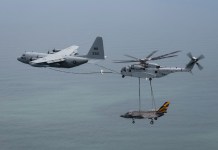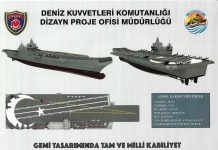A video in social media circles shows a Russian Su-35S engaging in what is claimed to be a beyond visual range (BVR) combat between a Su-35/Su-35S and a Ukrainian MiG-29, with the latter claimed to be shot down.
‘Within Months’ – US To Deploy Lockheed’s ‘Discrimination Radar’ That Will Keep An Eye On Both Indo-Pacific & Space
A previous Russian military promotional video from July 11 also shows a heads-up display (HUD) recording of a Russian Su-35 firing two missiles at a MiG-29 and claiming one of them hit the target.
The Su-35S is Russia’s second-most advanced fighter after the Generation 5 Su-57 and amongst the most advanced Generation 4++ multirole fighters in the world.
An advancement above even the Su-30SM2 fighters, a section of military aviation experts believe it is the Su-35 that might have a reasonable chance of shooting down an American F-22 Raptor or even an F-35 in close combat after the Su-57.
Even China’s own Su-35S blinded Taiwanese F-16s with their powerful electronic warfare systems to suddenly appeared on their radar, forcing the latter to panic and retreat, EurAsian Times had reported.
The 24 Su-35s purchased by China also hold the second-most coveted position in their inventory after their own indigenous J-20 stealth fighter.

What Does The Video Show
The video shows a Su-35 with what looks like electronic warfare (EW) pods on its wing tips taxiing and taking off.
Parts of the vertical stabilizer (tail) and behind the nose cone, just under the cockpit, are blurred out. This is to possibly hide the formation, unit, and thereby the location of the airbase from which the Su-35 is departing
The Su-35 carries one Kh-31 air-to-surface missile under the left wing and two R-73 short-range air-to-air missiles, and two R-77 Beyond Visual Range (BVR) missiles – one on each wing. On the wingtips, it has electronic warfare pods, possibly the Khibiny-M EW suite.
We then see brief views from the pilot’s perspective inside the cockpit from the go-pro camera attached to his helmet. The footage then shows the HUD capturing the release of a salvo of two missiles.
A Twitter user posted the same video but edited it with watermarks of Zvezda news and an interview of the pilot, claiming he shot down a MiG-29. There is Russian commentary in the background, and the pilot is believed to make the same claim towards the end of the video.
Su-35 shoots down Mig-29 Ukr with AAM R-77 pic.twitter.com/DR0aiiBuWh
— Koba (@Roberto05246129) August 12, 2022
In the previous engagement between the Su-35 and the MiG-29 on July 11, a YouTube user posted an even detailed comment in the video description:
“On July 9, a Su-35S shot down a Ukrainian MiG-29 near Slavyansk. At 0:28, at the speed of the Su-35 Mach 1.3 (true airspeed 1440 km/h), the first missile (R-77 from a distance of about 25 km) is launched.
The MiG-29 is in the scope, it is visible as a dot in the center of a green circle. It flies at extremely low altitudes. At 0:47, the second missile is launched, and a second later, the first missile hits the target. Su-35 pilot reports ‘tsel porazhena’ (target hit).”
MiG-29 vs Su-35
Cold War-era MiG-29s, built in the mid-1980s, might be suited for point air defense of airfields and basic ground attack missions today. But they can’t face the active radars, electronics, sensors, and advanced engines of the Su-35.
The wide technological gap between Soviet-built jets and modern Russian frontline fighters has been reflected in a large number of Ukrainian Su-27s and MiG-29s being shot down.
MiG-29s were the Soviet frontline fighters deployed against the North Atlantic Treaty Organization (NATO) by the Soviet Union and Warsaw Pact countries.
The R-77 claimed to have been fired by the Su-35 has an Active Electronically Scanned Array (AESA) seeker, can receive mid-course guidance, and has a laser-based proximity fuse.
This makes it immune to Electronic Counter Measures (ECM) and jamming. Ukrainian Air Force (UAF), on the other hand, has the older R-27ET and ER versions, where the former has an infrared seeker and the latter a semi-active/passive radar seeker.
This radar seeker of the ER isn’t even inside the missile but the jet itself. What the missile has is actually a passive radar receiver, which reads signals and guidance from the launching plane’s radar.
Thus, the pilot has to maintain a constant line of sight with the missile and can’t even turn his jet’s nose away, which would cause it to drift off course. This puts the launching jet (in this case, the older Su-27) at risk of getting shot down owing to two factors.
One, having to fly right behind the missile means the pilot is effectively closing the distance between him and the target adversary aircraft. Secondly, keeping his own radar switched on might also get him detected since the emitted electromagnetic emissions give away his own position.
But Ukraine, too, has claimed three Russian Su-35s – one at the hands of its own MiG-29 and another to surface-to-air (SAM) missiles. The first was on April 3, when a Su-35S was destroyed near Izium near Kharkiv.
The second was on May 27 when Ukrainian Air Force MiG-29 shot down the Su-27, which was “hunting for Ukrainian assault aircraft.”
The last was on July 19, which the Ukrainian Armed Forces command speculated was a Su-35S shot down by their air defense shot down near Nova Kakhova in Kherson. Several videos on Twitter showed a plane coming down upright in a ball of fire, which they claimed was a Su-35.
- The author can be reached at satamp@gmail.com
- Follow EurAsian Times on Google News





